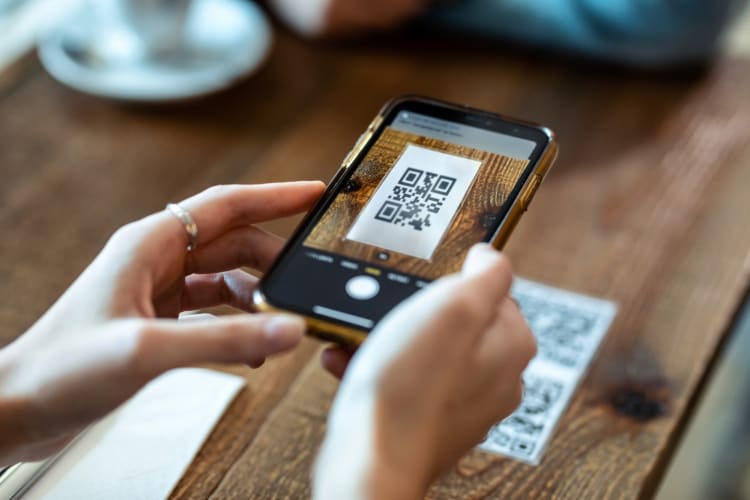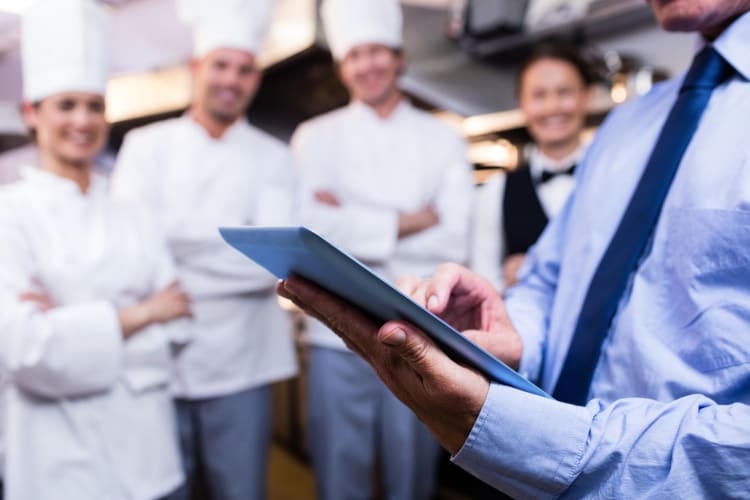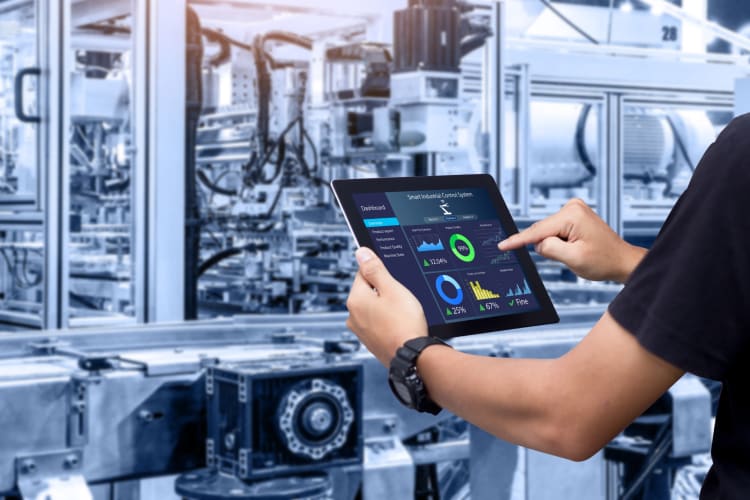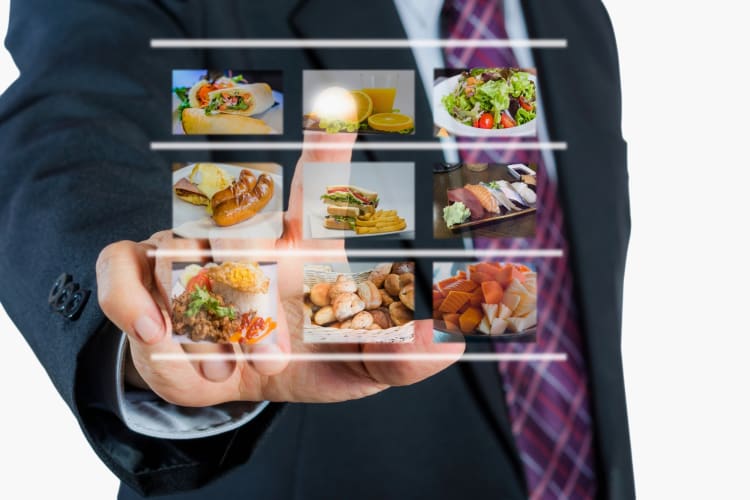15 Ways AI in Restaurants Will Shape the Industry in 2025

With AI cropping up in almost every sector of the business world, AI in restaurants presents some promising possibilities for making use of advanced algorithmic tech. For such a human-centered industry, using AI in restaurants poses some intriguing questions about how attuned technology can be to the needs of consumers.
Predictions from NIH indicate a surge in coming years that will guide sustainability and business intelligence, though the influence can already be felt in chains like Starbucks and Yum! Foods, early adopters of the potential for AI in the restaurant world.
In what ways will AI impact the food service industry beyond what’s already been implemented? There’s almost no aspect of the restaurant business that won’t be impacted. From creating efficiencies to make workflow smoother to helping chefs imagine new and inventive dishes, here are 15 ways in which AI in restaurants has the potential to bring big changes to the world of dining.
Jump to Section
- What Is AI in Restaurants?
- 15 Ways to Use AI in Your Restaurant
- Why Should Restaurants Implement AI?
What Is AI in Restaurants?
AI in restaurants refers to the introduction of algorithmic technology to streamline operations in various areas of the business. With advances in areas like automation, restaurants can function more efficiently than ever before. Thanks to customer service applications and decision-making functionality, management can make better use of its workers and resources to benefit both the operation and its consumers. You may have already run into AI used in this way, through platforms like Taco Bell’s AI-assisted drive-thru ordering system and Panda Express’s order recommendation chatbot.
As with other industries, organization and workflow offer important aspects for improvement through AI-based means, though balancing the technology against the human staff is essential for success. Allowing the customer to have a more direct experience than may be possible due to staffing shortages and time constraints, AI can also enhance a guest’s moments within an establishment, a crucial aspect that generates a feel-good spirit for such a machine-driven tool.

15 Ways to Use AI in Your Restaurant
1. Customizing Patron Experiences
One of the most accommodating functions of AI in restaurants is the customization of experiences among patrons based on prior visits. Picture your most loyal customers being able to hold their favorite table on Saturday night without having to lift a finger. Or visualize a family who set up a special occasion dinner arriving to a fully personalized experience that didn’t require a team of culinary technicians to create.
Even artful touches like having a client’s favorite music piped to speakers at their table or providing a bespoke menu filled with their most loved dishes become possible with AI in restaurants optimizing the needs of the guest based on a stored history of their previous preferences. This sort of innovation can give even a modest operation the chance to make a major impression on its clientele.

2. Assisting with Drive-Thru Service
With AI in restaurants assisting in the drive-thru lane, customers can look forward to a smoother experience that minimizes wait times and maximizes resources. Fast food AI services like Wendy’s FreshAI help elevate accuracy and speed while also allowing human workers to concentrate on food prep. Advancements will only expand the possibilities for making the drive-thru experience more pleasant and efficient.
With a broader spectrum of linguistic and communication capabilities, an AI-capable concierge service could field orders in a variety of languages and dialects. Picture the power of a drive-thru operation that can accommodate visitors in their native tongue while relaying orders seamlessly to workers speaking an entirely different language. Not only does it open the doors to a broader customer base, it provides the flexibility needed to serve a diverse public.

3. Guiding Self-Service Kiosks
A more intuitive digital ordering experience is possible for customers thanks to the use of ordering kiosks that turn AI in restaurants into a fine-tuned electronic concierge service. This could be as simple as a screen-based interface that distinguishes regular customers from new visitors and tailors the ordering experience for each or as complex as a welcoming human-presenting avatar that responds to patrons in real time to recreate a more nuanced interaction.
Thanks to voice-replicating AI in restaurants, personalized audio feeds could be directed to specific guests via Bluetooth to minimize ambient noise for other diners. With interactive kiosks already cropping up in restaurants like McDonald’s, this form of fast food AI is already in play, with plenty of potential for expansion.

4. Providing More Accurate Voice-Activated Systems
With time and precision being of the essence in the restaurant game, having AI in restaurants providing better voice-activated functionality can translate into hands-free human-to-tech interaction with minimal errors. Being able to read orders into a device rather than writing them down manually will free up servers to ensure accuracy, while a feed to back-of-house operations can create an instant queue for all incoming orders.
Augmenting the system further, a direct feed to an inventory database could instantly update product counts and generate shopping lists without requiring manual labor. Similarly, visually impaired guests could utilize a robust app system that reads them the menu and allows them to place orders vocally rather than requiring them to read, an accommodation that engages both goodwill and good business.

5. Streamlining Scheduling and Staffing
Accommodating the calendars of work staff can become a much more streamlined process when AI in restaurants is utilized to help create schedules and organize calendars. Workers can update their availability through an app-based form that feeds into an AI-driven program designed to sort and arrange shifts instantaneously.
For potential last-minute absences, an algorithm could pinpoint fill-ins based on the current calendar and a standing schedule of emergency backup workers. Take the system one step further, and an employee signaling their absence could trigger a call to their fill-in without management having to step away from their duties.

6. Forecasting Business Trends
It's crucial to anticipate upcoming trends when trying to keep up with competition, which makes incorporating AI in restaurants a powerful option. Robust data analytics inherent in AI in restaurants can synthesize a direction forward that follows intricate patterns that might not be easily discerned otherwise. Picture a readout that collects hyperlocal information about incoming restaurants in your city and swings in regional dining, allowing you to shift your menu or strategize your quarterly plans to keep up with new competitors before they even launch. AI in restaurants is the tool to make it possible.

7. Tailoring Promotions and Marketing
Imagine being able to reach key audiences in a variety of ways and customize your message based on the specific tastes of different sectors of your clientele. AI in restaurants would make it possible to zero in on prior orders from regular customers and create unique promotional offers available only to them. Rather than a blanket frequent visit reward program, each patron would receive special deals that they’re more likely to take advantage of, inspiring further loyalty while bringing in potential upswells in revenue.
If there’s a particular event in the area or a special occasion on the calendar, AI in restaurants would make it possible to reach locals via app, text or email messaging to alert them to your eatery’s festivities and fill their feeds with details and discounts. Systems like Starbucks Deep Brew are already using such specialty criteria as weather and time of day to pinpoint the company’s marketing efforts.

8. Automating Food Prep
Providing automated food prep opportunities is one of the potentially controversial uses of AI in restaurants, most notably in the possibility of eliminating human jobs in favor of automated systems. Particularly in the world of fast food AI, Yum! Brands, that operate fast-food favorites like Pizza Hut, tap into the tech lines to assist with real-world aspects like oven temperature settings and coordinating delivery schedules to make it easier for workers to deliver orders on time. Extending this feature into back-of-house functions, special alerts can be set to signal out-of-date items in the refrigerator or when cold storage drops below allowable temperatures, allowing quick action to prevent food safety issues as well as unnecessary loss of product.

9. Booking Reservations and Managing Waitlists
What if you could use AI in restaurants to ensure accuracy in your reservation bookings and create waitlists with minimal gaps between customers? An algorithm can make sure that any dropped or canceled reservations are immediately available and presented on your website while coordinating the calendar to accommodate as many seatings as possible. The overall effect could be increased business thanks to the ability of an automated system to arrange time slots that provide an optimal experience for both clients and staff. While the presence of AI in restaurants is already felt in dedicated apps that allow reservation bookings, the manual effort of the customer could be eliminated by a more robust AI system that keeps their preferred reservation flagged electronically for easier access and even sends out friendly digital nudges reminding them that they love a table for two near the bar on Saturday nights at 8:00!

10. Optimizing Searchability
Thanks to the data amalgamation capabilities of AI in restaurants, you don’t have to become an SEO ninja to determine the best way to become visible to customers searching the Internet for great places to eat. Putting AI tech to work in the background can give you a leg up with regular updates to the most current search terms added to your listings and online ads automatically.
With communication between an AI system and your preferred ad service, you could dramatically shift your presence without having to dig into the guts of your verbiage. Having an AI assistant that does it for you is like having an inside helper who knows how to get the job done, even when the requirements change from minute to minute.

11. Processing Orders
If one of the most complaint-worthy aspects of a dining experience is a customer’s time between ordering and receiving their food, the solutions offered by AI present a direct channel for improvement. By implementing a system that allows waitstaff — or even customers — to input orders directly to the kitchen, the potential for lag time is minimized greatly.
The accuracy of the order may be improved as well, by sidestepping handwriting that’s difficult to read or even an error made on a touchscreen by a frenzied server. With cooks receiving a readout of exactly what’s expected of a particular table, the ability to jump into the order immediately becomes an enticing possibility, allowing for shorter wait times and fresher food on the table.

12. Managing Energy Use
Running a restaurant means massive amounts of energy consumption, generating a utility expense that can be tightened up by applying AI in restaurant operations to business infrastructure. A simple version of this is the smart thermostat, a programmable panel that helps anticipate high-use periods throughout the day and automatically adjusts usage to accommodate lower-use periods to balance things out.
More complex versions can incorporate timed shut-offs for major-consuming appliances when not in use to draw down wasted electricity and even systems that work with alternative energy sources like wind and solar to power your operation as efficiently as possible. Not only does this reduce the cost of monthly energy use, it also reduces the carbon footprint of an industry where required energy use is non-negotiable.

13. Inspiring New Taste Trends
One of the most exciting uses of AI in restaurants is the possibility for chefs to reach beyond their own imaginations to discover whole new taste trends to attract customers. For eateries that emphasize partnerships with local growers, this could mean honing in on the freshest seasonal buys with inventive recipes that combine available produce deliciously. For avant-garde bistros in search of the most cutting-edge creations, it could mean bringing together fusion elements from cultural cuisines as-yet-untried to foster an appetite for artful fare with a contemporary twist.
Even simple elements like an ice cream parlor that introduces international flavors into its monthly selection could benefit from a list of AI-driven possibilities drawn from far and wide. Generative AI applied to the culinary ecosystem within a restaurant lets the restaurant's most creative figures push the boundaries without leaving the confines of the kitchen.

14. Conducting Food Delivery Service
Being able to manage your eatery's delivery service with minimal intervention is a solution AI in restaurants is already helping provide. The coordination involved in getting meals prepped and into a delivery vehicle is already being helped in restaurants like Pizza Hut, where AI even taps into local traffic to find clearer routes for drivers.
From the simplest version like Domino’s app allowing you to follow your order from start to finish to more sophisticated possibilities like automated signaling of nearby Uber Eats and DoorDash drivers alerting them to swing by and grab the most recently completed creations, the constant ebb and flow of food delivery gives an AI engine a veritable feast of possibilities to chew on.

15. Maximizing Supply Chain
With the wide-ranging connectivity provided by AI in restaurants, there's no need to ever run out or even run low on any of your most essential supplies. A system that tracks the usage of every item in storage as it travels from a storeroom shelf to a finished meal allows constant updating to make sure popular items are replenished well ahead of depletion while providing updates on lesser-used items that may need to be moved soon to avoid spoilage.
It can even arrange a calendar of donation dates for unused products that can still have value to the local community while minimizing losses and providing beneficial charitable write-offs. This version of restaurant-based AI becomes increasingly valuable the larger an operation and its product volume becomes.

Why Should Restaurants Implement AI?
The intricate and often high-stress environment of the dining industry is a prime scenario for which AI in restaurants provides solutions and creates efficiencies in almost every aspect of the business. The complexity of operations can be streamlined and profitability enhanced with the solutions offered by well-placed AI in restaurants.
Automated systems that keep logjams to a minimum and enhance the circuitry of a restaurant’s inner workings are not only beneficial, but they’re also quickly becoming essential. In a very real way, with high turnover rates that make retaining workers a logistical obstacle, having AI in restaurants ready to pick up the slack can keep the enterprise in motion with minimal disruption.
From a customer-facing perspective, AI in restaurants is a ready mechanism for providing a more consistently enjoyable experience. Restaurants like Wendy’s and Starbucks are already taking advantage of AI in restaurants to fine-tune service. Sometimes this happens through app-based interactions that anticipate the needs of the user, while other instances factor AI in restaurants into behind-the-counter functionality to make the enterprise run more smoothly for both workers and patrons.

Benefits of AI in Restaurants
The benefits of integrating AI in restaurants are bountiful, for the operation, its workers and its customers. Efficiency in workflow and reduction in human error are the most obvious advantages of introducing AI in restaurants. It's easy to imagine an operation that never runs low on supplies and ingredients and can provide personalized customer services thanks to technology that anticipates ordering and scheduling.
By assisting with back-of-house aspects such as organizing customer orders for timely fulfillment and helping chefs conjure an endless list of creative recipes, AI in restaurants can help minimize stress by identifying pain points and providing solutions that smooth them out seamlessly.
AI in restaurants is also a valuable tool for scaling your business to suit your goals without sacrificing the quality of either your food or your operation. Thanks to the incredible calculational capabilities of AI in restaurants, a whole new layer of financial awareness will allow the industry to capitalize on hyper-local trends that capture the attention of customers and maximize an eatery's ability to pull in additional revenue. And with the vast potential for generative functionality, restaurants using AI can stand in the gap between artistry and industry, helping chefs keep their offerings fresh and contemporary without missing a beat.

Challenges of AI in Restaurants
Despite the many opportunities for AI in restaurants, there are plenty of challenges for incorporating AI in restaurants as well. Chief among these concerns is the cost of implementation, which may require extensive updates to systems. There’s also the real-world difficulty in determining how to balance human workers with technology to reach maximum efficiency without compromising staffing.
It's easy to picture a fully automated restaurant industry thanks to quick and powerful advancements in AI in restaurants, but the human touch is an important aspect of the dining experience. It's also challenging to become dependent on AI in restaurants knowing how quickly the field is changing.

Introducing AI in restaurants today could come with system integration issues, with future requirements of regular updates and upgrades to keep up with the latest advancements and enhancements. Restaurants using AI take on the added burden of becoming even more tech-dependent, which can turn outages into revenue-losing pitfalls. Ensuring data privacy and meeting regulations surrounding customer information is also a critical aspect that could make integrating AI in restaurants a tricky feat. By striking a firm balance between AI in restaurants and human oversight, the industry can find a happy medium that addresses these concerns.
For even more ways to explore the industry, check out other experiences happening on Cozymeal.



FOOD FOR THOUGHT?
Join the conversation.